Related Research Articles

The Pribilof Islands are a group of four volcanic islands off the coast of mainland Alaska, in the Bering Sea, about 200 miles (320 km) north of Unalaska and 200 miles (320 km) southwest of Cape Newenham. The islands are part of the Alaska Maritime National Wildlife Refuge. The Siberian coast is roughly 500 miles (800 km) northwest. About 77 square miles (200 km2) in total area, they are mostly rocky and are covered with tundra, with a population of 572 as of the 2010 census.

The Bering Sea is a marginal sea of the Northern Pacific Ocean. It forms, along with the Bering Strait, the divide between the two largest landmasses on Earth: Eurasia and the Americas. It comprises a deep water basin, which then rises through a narrow slope into the shallower water above the continental shelves. The Bering Sea is named after Vitus Bering, a Danish navigator in Russian service, who, in 1728, was the first European to systematically explore it, sailing from the Pacific Ocean northward to the Arctic Ocean.

The United States Fish and Wildlife Service is a U.S. federal government agency within the U.S. Department of the Interior which oversees the management of fish, wildlife, and natural habitats in the United States. The mission of the agency is "working with others to conserve, protect, and enhance fish, wildlife, plants and their habitats for the continuing benefit of the American people."
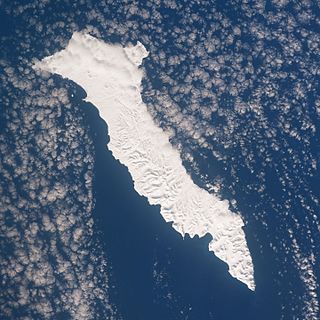
Bering Island is located off the Kamchatka Peninsula in the Bering Sea.

St. George is a city in Aleutians West Census Area, Alaska, United States. It is the main settlement of St. George Island in the Pribilofs, a small island group in the Bering Sea. At the 2010 census the population was 102, down from 152 in 2000.
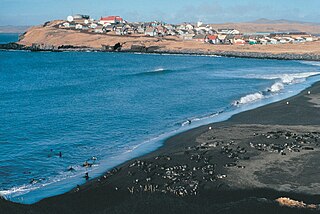
St. Paul is a city in the Aleutians West Census Area, Alaska, United States. It is the main settlement of Saint Paul Island in the Pribilofs, a small island group in the Bering Sea. The population was 413 at the 2020 census, down from 479 in 2010. Saint Paul Island is known as a birdwatching haven.

Gavriil Loginovich Pribylov was a Russian navigator who discovered the Bering Sea islands of St. George Island and St. Paul Island in 1786 and 1787. The islands, and surrounding small islets, now bear his name, being known as the Pribilof Islands.
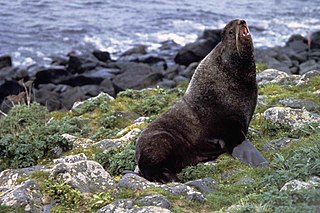
The northern fur seal is an eared seal found along the north Pacific Ocean, the Bering Sea, and the Sea of Okhotsk. It is the largest member of the fur seal subfamily (Arctocephalinae) and the only living species in the genus Callorhinus. A single fossil species, Callorhinus gilmorei, is known from the Pliocene of Japan and western North America.
The Bering Sea Arbitration of 1893 arose out of a fishery dispute between the United Kingdom of Great Britain and Ireland and the United States in the 1880s. The United States Revenue Cutter Service, today known as the United States Coast Guard, captured several Canadian sealer vessels throughout the conflict. Diplomatic representations followed the capture of the first three ships and an order for release was issued by the British imperial government, but it did nothing to stop the seizures and none were released. This led to the U.S. claiming exclusive jurisdiction over the sealing industry in the Bering Sea, and that led to negotiations outside of the courts. The award was given in favor of the British, however, and the Americans were denied exclusive jurisdiction. The British were awarded compensation for the damage that had been inflicted on their vessels, and the American sealing zone remained as it was prior to the conflict.

The United States Fish Commission, formally known as the United States Commission of Fish and Fisheries, was an agency of the United States government created in 1871 to investigate, promote, and preserve the fisheries of the United States. In 1903, it was reorganized as the United States Bureau of Fisheries, sometimes referred to as the United States Fisheries Service, which operated until 1940. In 1940, the Bureau of Fisheries was abolished when its personnel and facilities became part of the newly created Fish and Wildlife Service, under the United States Department of the Interior.
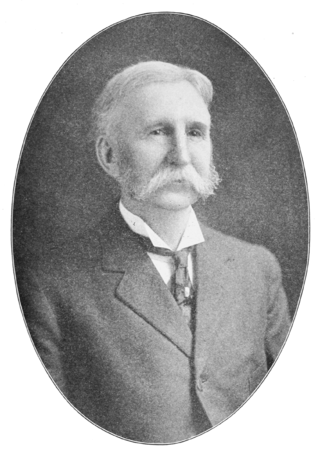
Frederic Augustus Lucas was a zoologist and taxidermist who served as a curator of the Brooklyn Museum and director of the American Museum of Natural History. He was an expert on the osteology and anatomy of birds.
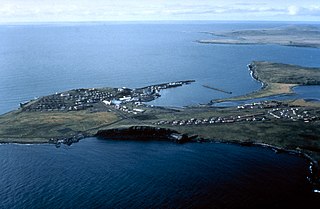
The Seal Island Historic District is a National Historic Landmark District located on the islands of St. George and St. Paul in the Pribilof Islands in the Bering Sea of Alaska. These islands are home to northern fur seal herds which were actively hunted by indigenous populations and later by many nationalities. These islands of the Pribilofs are also the southern end of the range of the polar bear, The North Pacific Fur Seal Convention of 1911 signed by the United Kingdom, Japan, Russia and the United States limited hunting of the seals on these islands; this international treaty was one of the first conservation treaties, and set the stage for subsequent treaties.

The North Pacific Fur Seal Convention of 1911, formally known as the Convention between the United States and Other Powers Providing for the Preservation and Protection of Fur Seals, was a treaty signed on July 7, 1911, designed to manage the commercial harvest of fur-bearing mammals in the Pribilof Islands of the Bering Sea. The treaty, signed by the United States, Great Britain, Japan, and Russia, outlawed open-water seal hunting and acknowledged the United States' jurisdiction in managing the on-shore hunting of seals for commercial purposes. It was the first international treaty to address wildlife preservation issues.
Pribilof Island School District or Pribilof School District is a school district headquartered on the grounds of St. Paul School in St. Paul, Alaska. It serves students living on the two inhabited Pribilof Islands, Saint Paul Island and Saint George Island.

US FWS Pribilof was an American refrigerated cargo ship in commission in the fleet of the United States Fish and Wildlife Service (USFWS) from 1964 to 1970 and, as NOAAS Pribilof, in the fleet of the U.S. National Oceanic and Atmospheric Administration′s National Marine Fisheries Service (NMFS) from 1970 to 1975. She ran a cargo service between Seattle, Washington, and the Pribilof Islands – the last of the United States Government "Pribilof tenders" to carry out this function – and also made USFWS and NMFS research cruises in the Pribilofs.

US FWS Penguin II was an American refrigerated cargo ship in commission in the fleet of the United States Fish and Wildlife Service from 1950 to 1963. She ran a cargo service between Seattle, Washington, and the Pribilof Islands, and also delivered provisions to Aleut communities on the Alaska Peninsula and in the Aleutian Islands. Prior to her fisheries service, she was the United States Army cargo ship U.S. Army Lt. Raymond Zussman (FS-246).

USFS Penguin was an American cargo liner in commission in the fleet of the United States Bureau of Fisheries from 1930 to 1940 and, as US FWS Penguin, in the fleet of the U.S. Fish and Wildlife Service from 1940 to 1950. She ran a passenger-cargo service between Seattle, Washington, and the Pribilof Islands, and provided transportation between the two inhabited Pribilofs, Saint Paul Island and St. George Island. She also carried passengers, supplies, and provisions to destinations on the mainland of the Territory of Alaska and in the Aleutian Islands. She occasionally supported research activities in Alaskan waters and the North Pacific Ocean.

USFS Eider was an American motor schooner in commission in the fleet of the United States Bureau of Fisheries from 1919 to 1940 and, as US FWS Eider, in the fleet of the U.S. Fish and Wildlife Service from 1940 to 1942 and again in the late 1940s. She ran a passenger-cargo service between Unalaska and the Pribilof Islands, and also carried passengers, supplies, and provisions to destinations on the mainland of the Territory of Alaska and in the Aleutian Islands. She occasionally supported research activities in Alaskan waters and the North Pacific Ocean, and she conducted patrols to protect Alaskan fisheries and marine mammals. In 1924, she provided logistical support to the first aerial circumnavigation of the world.

US FWS Dennis Winn was an American cargo liner in commission in the fleet of the United States Fish and Wildlife Service from 1948 to 1960. She frequently provided a passenger and cargo service to and from the Pribilof Islands, and also carried passengers and cargo to and between other communities and FWS stations in the Territory of Alaska. Prior to her fisheries service, she was the United States Army cargo ship U.S. Army Lt. Walter J. Will (FS-244).
Elizabeth Beaman (1844-1934), also known by her maiden name Elizabeth Gertrude DuBois, was the first non-Aleut woman to go to the Pribilof Islands off the coast of Alaska. She was a naturalist, artist, mapmaker, and writer. Her year spent in Alaska produced a diary in which she wrote about her experiences during seal season. Not much is known of Beaman's later life, but her contributions to documenting her time in Alaska has established her as a woman who overcame societal norms and expectations.